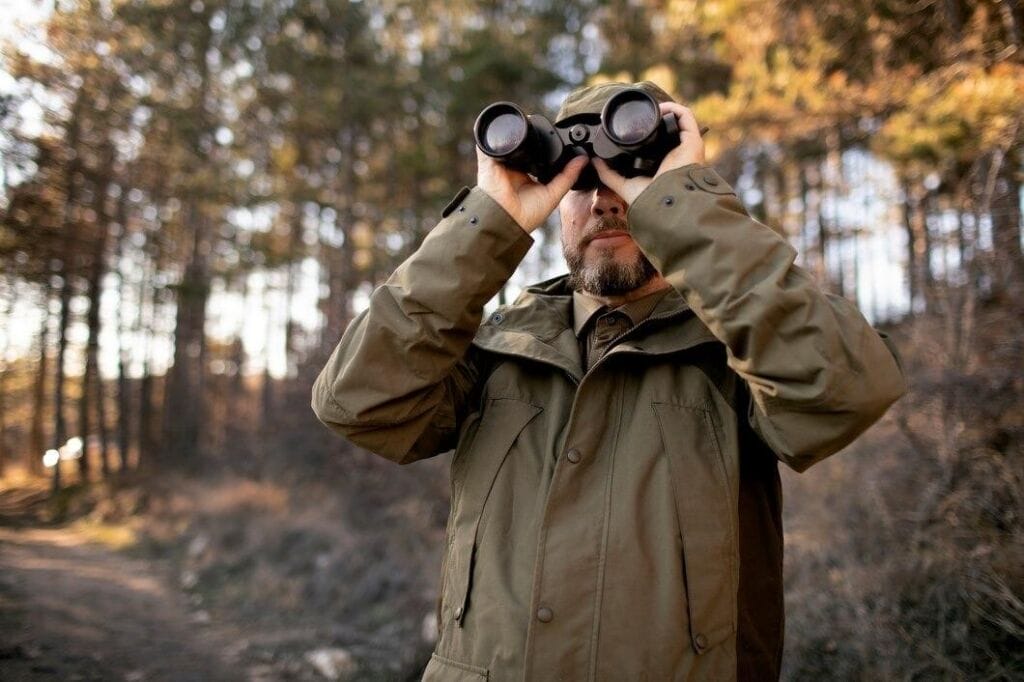Arizona has beautiful land and many different animals, making it great for people who love being outside. If you’re walking in the rough land of the Grand Canyon or sleeping outside in Sedona under the stars, there’s always something fun to do.
But what if you could make your outside adventures even better?
Enter thermal optics—a unique technology that can help you see things you’ve never seen!

The Power of Thermal Optics
Thermal optics help you see heat instead of just what you usually see with your eyes. They work by sensing the warmth that things give off, even if you can’t see it. They give you a secret power to see in the dark or through bushes and trees.
Imagine you’re exploring Arizona, where it can get hot during the day. Animals might hide in cool places to stay out of the sun. But with thermal optics, you can find them by seeing the heat they give off, even if they’re hiding in the shade.
And when it’s dark outside, thermal optics help you see animals that come out at night, like owls or coyotes, even if it’s too dark for your eyes to see them.
These special glasses make outdoor adventures even more exciting because you can discover things usually hidden from view.
Understanding Thermal Imaging Technology
It’s all about how we see heat! Imagine looking at a picture, but instead of colors and shapes, you see how warm or cool things are. Here’s how it works:
- Heat detection: Thermal cameras are like super-sensitive heat detectors. They pick up on the warmth of objects, animals, or even people.
- Picture making: Once the thermal camera senses the heat, it turns it into a special kind of picture that we can see on a screen. Warmer objects appear brighter, while cooler things look darker.
- Color choices: Thermal cameras often let you choose different colors for the picture. You might choose red, yellow, or blue, depending on what helps you see best in various situations.
Choosing the Right Equipment
When venturing into the wilderness of Arizona with thermal optics, selecting the right equipment is vital. You want to make sure it fits just right and does precisely what you need it to do. Here are some simple things to keep in mind when selecting your equipment:
Resolution
It refers to the clarity of a picture. When you take a photo with your phone, a high-resolution camera makes the picture clearer and sharper. It’s similar to thermal optics—the clearer the image, the better you can see things.
In thermal optics, resolution shows how many tiny dots, called pixels, make up the image. More pixels mean a clearer picture. Imagine each pixel as a little dot that forms the overall image. The picture becomes more detailed with more pixels, clearly showing even the smallest things.
A high-resolution thermal camera is helpful for outdoor adventures in Arizona, like spotting animals or navigating rough areas. It lets you see small details, like an animal’s shape or the texture of the ground. That can be important for staying safe and spotting wildlife.
However, you must balance resolution with other factors, such as cost and battery life. Higher-resolution cameras often cost more and may require more power to work. So, think about what you need and how much you’re willing to spend when choosing the resolution of your thermal camera.
Range
Range means how far you can see with your thermal optics. It’s like when you use binoculars to see things far away, but instead of regular light, thermal optics use heat to see.
Why does range matter? Let’s say you’re out in Arizona, trying to find animals. Some animals might be hiding far away. With good range in your thermal optics, you can spot those animals even if they’re hiding in bushes or rock crevices.
Different thermal optics have different ranges. Choosing thermal optics with a range that fits your needs is important. If you want to find animals or see far away, you’ll need optics with a good range.
But the range is about more than just seeing far. It’s also about seeing things clearly. If your thermal optics can see far but the picture is blurry, it’s not very helpful. So, when you pick thermal optics, think about how you can see things far away, too. That way, you can find animals or move around in the wilderness without problems.
Portability
It’s all about how simple it is to take your gear with you. Picture yourself hiking up a rocky trail or camping in a remote spot. You want to avoid heavy, bulky gear weighing you down.
Thankfully, many thermal optics, like those from Pulsar, are made to be portable. They’re designed to be light and small so that you can pack them easily along with your other things.
You want gear that won’t slow you down when you’re on the move, like hiking up a hill or exploring a desert. Portable thermal optics help you stay quick and flexible to move around quickly. Plus, they only occupy a little space in your backpack, giving you more room for snacks and water.
Portability is also about how easy it is to use. Imagine having a simple thermal optic to carry and quick to set up. That means you can use it whenever you need it, whether looking for animals or checking out something far away.
Battery life
You should pick thermal optics with batteries that last a long time. Look for ones that can keep working for many hours without being charged. So you don’t have to worry about them stopping in the middle of your adventure.
However, as great as their battery life can be, bringing extras with you would still be advisable. This is because you might not have anywhere to plug in and charge your batteries while exploring nature.
Tips for Maximizing Your Experience With Thermal Optics
Here are some simple yet effective tips for getting the most out of your thermal optics experience in Arizona:
- Look slow, look steady: Take your time while scanning the area. Move your thermal optic slowly and steadily. Quick movements might cause you to miss out on spotting animals or interesting thermal patterns.
- Focus on hot spots: Concentrate on places where you expect to find warmth. This could be near water sources, under rocks, or around vegetation. Animals often gather in these areas to regulate their body temperature.
- Be patient: Wildlife spotting isn’t a race. Sometimes, you might need to wait quietly to see movement. Patience is key. Enjoy the process of observing and let the wildlife reveal itself.
- Play with the settings: Take some time to understand the different settings on your thermal optic. Adjust the brightness, contrast, and color palette to suit the environment and your preferences. Experimenting with these settings can improve visibility and help you spot things more clearly.
- Stay quiet and still: Animals are sensitive to noise and movement. Try to keep conversation to a minimum and avoid sudden movements. The more silent and stiller you are, the more likely you are to observe wildlife behaving naturally.
- Learn animal behavior: Research common wildlife in the area and learn about their behaviors and habitats. This knowledge will guide you to the best spots for observation.
- Respect wildlife boundaries: It’s essential to respect the space and privacy of the animals you observe. Always keep a safe distance and don’t disturb them. This not only ensures their well-being but also allows for more authentic observations.
- Practice, practice, practice: Like any skill, using thermal optics effectively takes practice. Spend time honing your observation skills in different environments and lighting conditions. The more you practice, the better you’ll become at spotting wildlife and interpreting thermal patterns.
- Stay safe: While exploring Arizona’s wilderness, prioritize safety. Carry essential supplies like water, navigation tools, and first aid kits. Let someone know your plans and expected return time. Enjoy your adventure responsibly, and be prepared for any unexpected situations.
Thermal optics are like magic glasses for outdoor adventures in Arizona. Remember to pick the right gear, learn how they work, and be patient when looking for wildlife. Thermal optics will make your Arizona experience even more impressive and full of surprises. So get ready to explore and discover Arizona’s wonders like never before.




